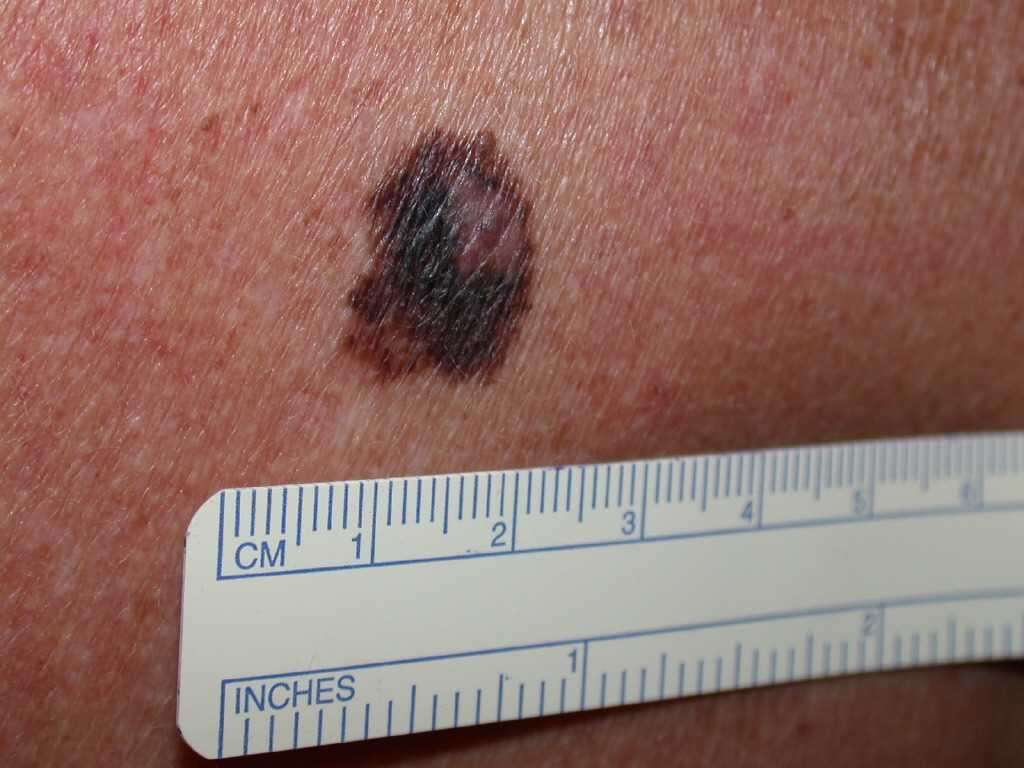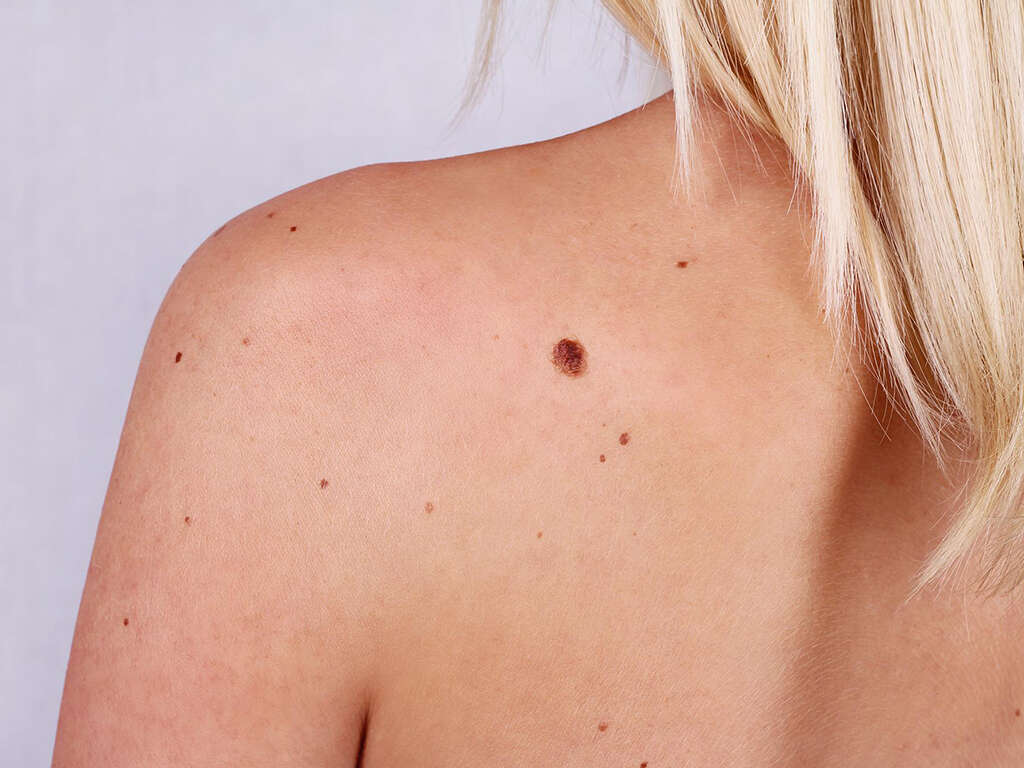10 Symptoms of Melanoma
Melanoma refers to cancer of the cells containing pigment (melanocytes). It most commonly affects the skin but can also involve areas such as the intestines, mouth, or eyes. Among women, it usually occurs on the legs while in men, on the back. The main cause of melanoma is due to exposure to ultraviolet (UV) light. It can therefore occur due to devices such as tanning beds. Some melanoma can develop from a mole where changes will then be observed. 25% of melanoma develop from moles. Risk factors include having many moles, positive family history of melanoma, those with genetic defects such as xeroderma pigmentosum, and those with poor immune function. The diagnosis of melanoma can be achieved through a biopsy of the affected area. Prevention of melanoma includes avoiding UV rays (through any method that decreases UV rays such as umbrella, staying in the shade, etcetera) and using sunscreen. Melanoma can be treated through surgery. For more advanced cases, the lymph nodes should be tested to ensure there is no metastasis. Prognosis is good without spread.
In cases that it has spread, treatment may include radiotherapy, chemotherapy, immunotherapy, and biologic therapy to improve survival. In the United States, patients who obtain treatment have a 98% five-year survival rate among those with localized melanoma and 17% among those with spread. The likelihood of recurrence depends on the thickness of the melanoma, the rate the cells are dividing, and if the overlying skin has broken down. In 2015, there were 3.1 million cases with 59,800 deaths. The highest rates of melanoma occur in Australia and New Zealand. Northern Europe and Northern America also have high rates of melanoma as it most commonly affects fair-skinned individuals.

Symptom #1: Asymmetry
A mole that you have should normally be symmetrical and round. If you draw a line through the middle of your mole, you should be able to get two halves that are symmetrical. If the two halves do not match, it means that the mole is asymmetrical which is an early warning sign of melanoma.
It may even start as a darker spot. Remember to check your skin for moles that may appear different compared to normal. Assess the symmetry of your moles periodically if you have risk factors for melanoma.

Symptom #2: Border
In melanoma, the borders of the lesion are usually ragged, notched, or irregular compared to non-malignant tumors that generally have a smooth and regular border. Even the borders of an early melanoma usually look uneven and may appear to be notched or scalloped. Look for the spread of pigmentation from the border of your mole or a darkened spot on your skin.
If the border looks blurry or has the appearance where it has “spilled” out of its edges, seek medical attention. If you notice that your mole has other changes such as scaliness or oozing, you should consult your doctor to ensure that it isn’t melanoma.

Symptom #3: Color
A normal mole usually has one color that is typically a single shade of brown. A mole that has a variety of colors is often a warning sign of melanoma. An affected mole often has several different shades of tan, black, or brown or even appear to look red, white, pink, or blue.
Individuals at risk of melanoma should keep a look out for moles that have a change in color. If there are other associated symptoms such as changes in border and asymmetry, consider seeking professional advice.

Symptom #4: Diameter
Normal and healthy moles are usually flat, small, symmetrical, round, and only have one shade of brown, black or tan color in appearance. One of the factors that might signify that the mole is affected is the diameter of the lesion.
While it is not an absolute rule, spots that are larger than 6 millimeters (1/4 inch or the size of a pencil eraser) in diameter may indicate that it is a melanoma. This is due to the reason that benign moles tend to have a smaller diameter compared to malignant lesions. If you notice that you have a darker spot that is growing or increasing in size, you should seek medical attention.

Symptom #5: Evolving
If a mole starts to evolve or change in any way, it may be a sign of melanoma. This includes any change in the shape, size, elevation, color, or any other trait. Evolvement of the mole can also include new symptoms such as crusting over the top, itching, bleeding, or oozing from the mole that also points to melanoma.
Benign moles usually look the same over time. However, it is normal for a mole to look a little darker during the summer.

Symptom #6: The Ugly Duckling Concept
The ugly duckling concept was introduced in 1988 based on the observation that nevi (or moles) in one individual tend to look alike. This means that malignant melanoma usually deviates from the usual pattern of nevi on the body.
This realization points to the importance that lesions should not only be evaluated based on their morphology but also compared to other nevi. For example, the suspicious lesion would appear to be darker and larger than the other nevus.

Symptom #7: Firm to the Touch
Normal moles are usually limp or give easily when pressed on. Moles, birthmarks, or pigmented areas that are elevated and firm to the touch are sites that you should be concerned about as nodular melanomas are often firm and not moving when pressured using a finger.
To monitor your moles, you can check it by pressing on the site with the finger. If you feel a hard or firm site, you should ask your doctor to evaluate the lesion.

Symptom #8: Growth of the Lesion
Normal moles do not usually grow quickly but in nodular melanomas, the affected sites or lesions tend to grow rapidly. Even new freckles or moles tend to stop developing or growing after a few weeks. Growth of development that continue after two to three weeks may mean that it is an early sign of melanoma.
It has been found that 31% of melanomas grow about 0.5 mm or more per month. Rapid growth rate is associated with increased tumor thickness, males, mitotic rate, and those who are 70 years or older.

Symptom #9: Loss of Appetite, Nausea, and Vomiting
In metastatic melanoma, there may be systemic symptoms that are nonspecific such as loss of appetite, nausea, and vomiting. Affected patients often have no desire to eat or feel full faster despite a small amount of food intake. This may be due to the nausea the patient experiences.
Nausea is defined as the urge to vomit while vomiting means the forceful expulsion of stomach contents from the mouth or nose.

Symptom #10: Neurological Symptoms
In advanced cases of melanoma, there may be metastasis to the brain. Since different parts of the brain have different functions, the neurological symptoms that the patient experiences depend on the site of metastasis.
Some of the most common neurological symptoms include new headaches, paresthesia (where the patient presents with weakness or paralysis on one side of the body), ataxia (patient experiences difficulties with coordination and spatial awareness), and seizures (usually indicates involvement of the cerebral cortex). Metastasis of the brain should be confirmed using imaging such as computed tomography (CT) or magnetic resonance imaging (MRI) scans.










